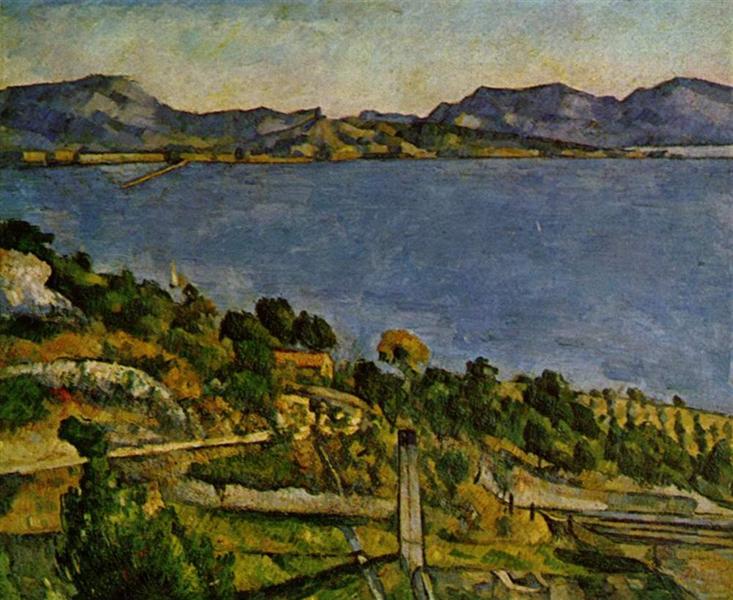Descriere
„Marea la L'Estaque” de Paul Cézanne, creată în 1885, este o piesă remarcabilă care încapsulează tranziția de la arta clasică la abordarea modernă care a definit traiectoria postimpresionismului. Acest peisaj marin reflectă fascinația artistului pentru formele și structura naturii, precum și utilizarea inovatoare a culorii și luminii. Pictura ne oferă o viziune asupra coastei de lângă Marsilia, un sit care a fost frecvent explorat de Cézanne și care a devenit un loc emblematic în opera sa.
Privind pictura, cineva este imediat atras de paleta vibrantă de albastru și verde care domină compoziția. Marea, în vastitatea ei, apare în diferite nuanțe care fluctuează între albastru profund și albastru moale, cu variații blânde care sugerează mișcarea valurilor. Interpretarea lui Cézanne despre apă este aproape abstractă; Pensiile sunt asociate mai mult cu construcția unei atmosfere decât cu o reprezentare literală, creând un sentiment de profunzime și dinamism în peisaj.
Compoziția este organizată într-o serie de planuri care direcționează privirea privitorului către o călătorie prin lucrare. În prim plan se observă mase mari de vegetație în tonuri de verde și galben, care contrastează cu albastrul mării. Vegetația este prezentată cu o tehnică care pune accentul pe culori, dezvăluind lumea senzorială prin utilizarea culorii mai degrabă decât a liniilor. Această abordare sugerează influența luminii asupra percepției realității, o temă recurentă în opera lui Cézanne.
La orizont, se văd munții care delimitează peisajul, prezenți adesea în opera artistului. Aceste forme sunt modelate cu o construcție solidă care dezvăluie interesul lor pentru structura de bază a naturii. Munții, pictați în tonuri pământii, nu acționează doar ca fundal, ci oferă și un sentiment de stabilitate și continuitate, echilibrând mișcarea apei.
Este interesant de observat că în această lucrare nu sunt prezentate figuri umane, permițând naturii să ocupe centrul scenei. Această decizie a lui Cézanne de a omite personaje poate fi interpretată ca o invitație către privitor de a se cufunda pe deplin în experiența peisajului, oferind un spațiu de reflecție și contemplare personală. Pictura devine astfel un refugiu în care privirea se poate odihni în interacțiunea dintre cer, mare și pământ, evidențiind relația intrinsecă dintre om și mediul său.
„Mar en L’Estaque” face parte dintr-o serie de lucrări pe care Cézanne le-a dezvoltat în acest colț al coastei mediteraneene, un loc care nu numai că i-a inspirat creativitatea, dar i-a permis și să experimenteze cu lumina și culoarea în moduri inovatoare. Influența acestei lucrări ar fi palpabilă în multe dintre mișcările artistice care vor apărea în secolul al XX-lea, în special cubismul, pentru care Cézanne, prin stilul său, a deschis calea.
Luând în considerare moștenirea artistică a lui Paul Cézanne, relevă importanța explorării sale a percepției vizuale și capacitatea sa de a descompune realitatea în forme fundamentale. „Mar en L’Estaque” nu este doar o mărturie a măiestriei sale tehnice, ci și o meditație profundă asupra naturii și a interpretării ei emoționale, o moștenire care continuă să rezoneze și astăzi.
KUADROS ©, un tablou celebru pe peretele tău.
Reproduceri de picturi în ulei realizate manual, cu calitatea artiștilor profesioniști și sigiliul distinctiv al KUADROS ©.
Serviciu de reproducere picturi cu garantie de satisfactie. Dacă nu sunteți complet mulțumit de replica picturii dvs., vă vom rambursa banii 100%.

